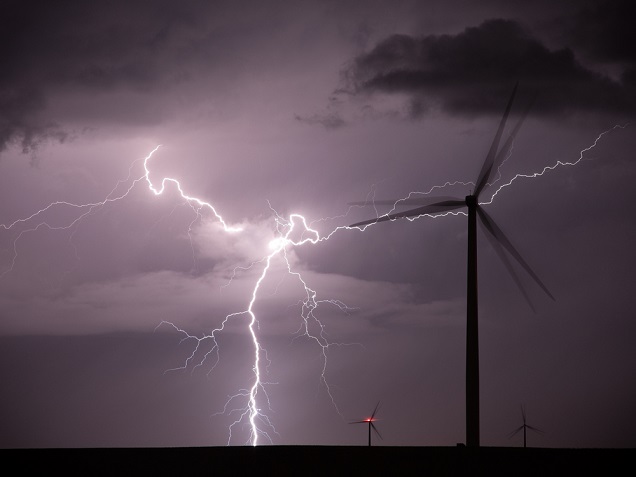This article is part of the Energy.gov series highlighting the “Top Things You Didn’t Know About…” series. Find the rest here.
10. Human civilizations have harnessed wind power for thousands of years. Early forms of windmills used wind to crush grain or pump water. Now, modern wind turbines use the wind to create electricity. Learn how a wind turbine works.
9. Today’s wind turbines are much more complicated machines than the traditional prairie windmill. A wind turbine has as many as 8,000 different components.
8. Wind turbines are big. Wind turbine blades average over 160 feet long, and turbine towers average over 260 feet tall — about the height of the Statue of Liberty.
7. Higher wind speeds mean more electricity, and wind turbines are getting taller to reach higher heights above ground level where it’s even windier. See the Energy Department’s wind resource maps to find average wind speeds in your state or hometown and learn more about how taller wind turbines can expand developable areas for wind energy production in the Energy Department’s 2015 Enabling Wind Power Nationwide report.
6. Most of the components of wind turbines installed in the United States are manufactured here. There are 500 wind-related manufacturing facilities located across 43 states, and the U.S. wind industry currently employs more than 100,000 people.
5. Offshore wind represents a major opportunity to provide power to highly populated coastal cities. See what the Energy Department is doing to develop offshore wind in the United States.
4. The United States generates more wind energy than any other country, and wind represented the largest source of all newly installed U.S. electricity generation capacity in 2015.
3. The United States’ wind power capacity surpassed 82 gigawatts at the end of 2016, making it the largest renewable generation capacity in the nation. That’s enough electricity to power more than 20 million homes annually — more than the total number of homes in Alaska, California, Delaware, the District of Columbia, Hawaii, Idaho, Maine, Montana, Nebraska, New Hampshire, North Dakota, Rhode Island, South Dakota and Vermont combined.
2. Wind energy is affordable. Wind prices for power contracts signed in 2015 and levelized wind prices (the price the utility pays to buy power from a wind farm) are as low as 2 cents per kilowatt-hour in some areas of the country. These rock-bottom prices are recorded by the Energy Department’s annual Wind Technologies Market Report.
1. By 2050, the United States has the potential to create 600,000 jobs, save consumers $149 billion, and save 260 billion gallons of water by continuing to increase the amount of wind energy that powers our homes, schools and businesses. In 2015, the Energy Department released Wind Vision: A New Era for Wind Power in the United States, which quantifies the economic, social, and environmental benefits of a robust wind energy future through 2050.

